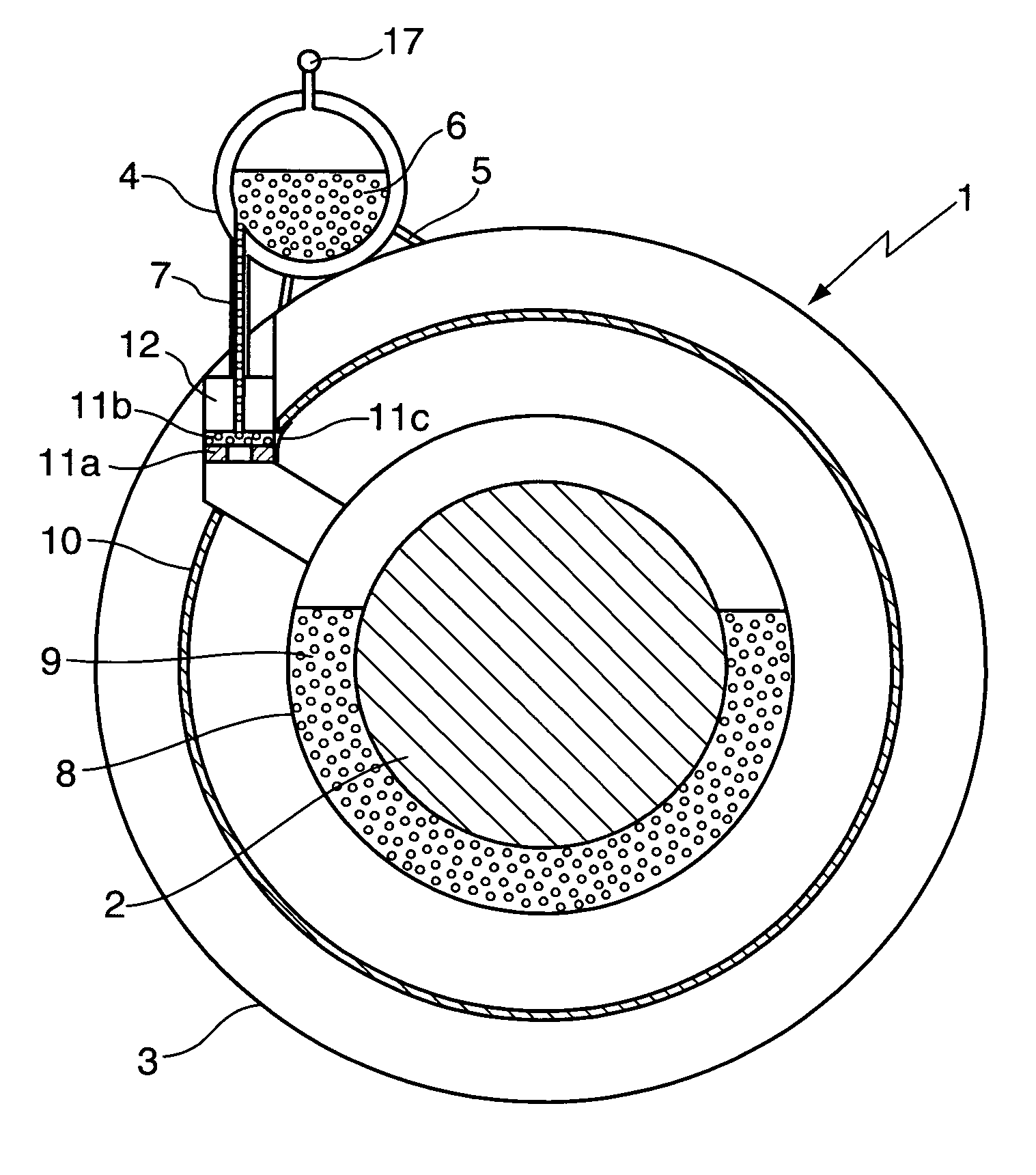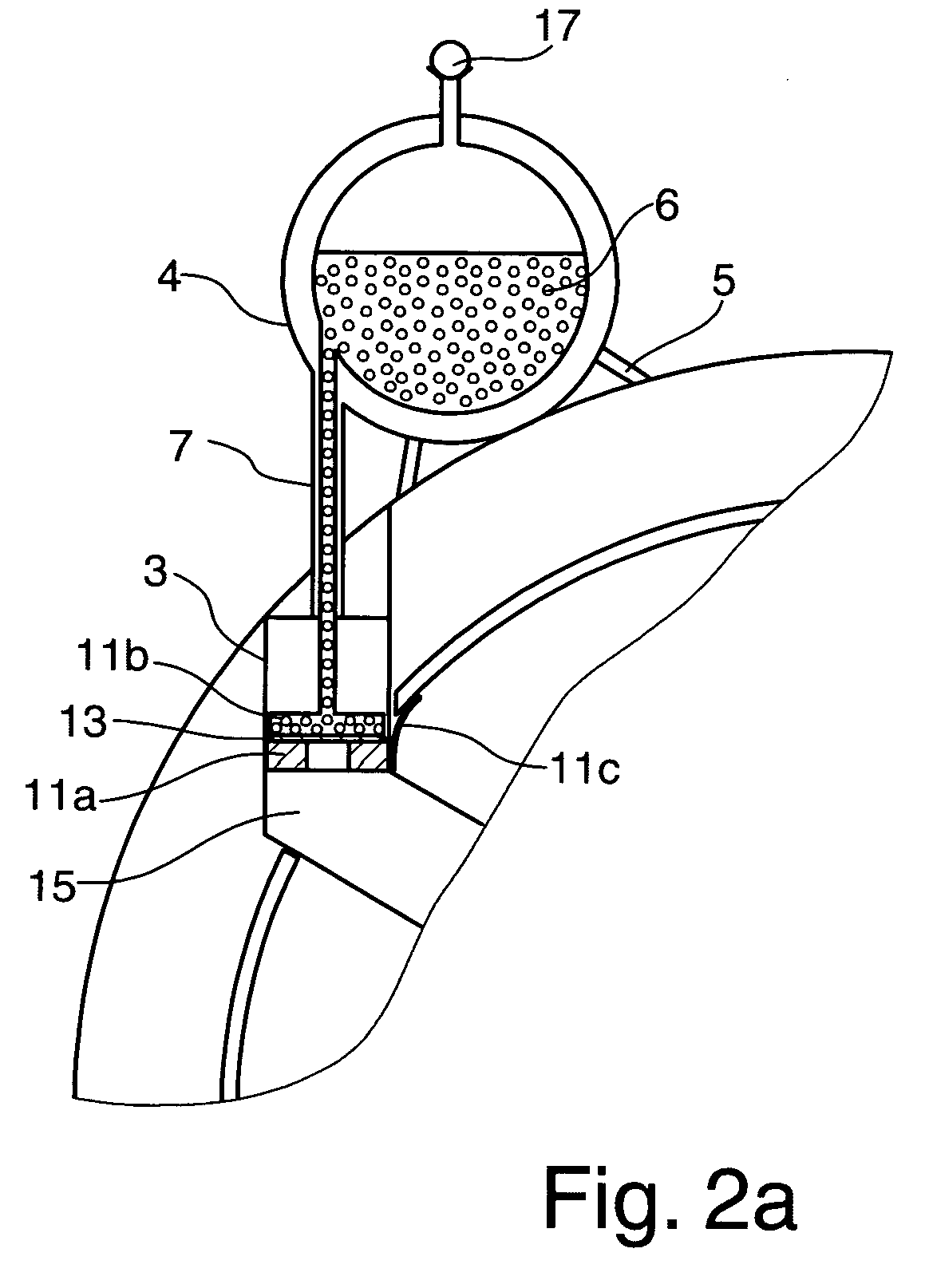Method for cooling a cryostat configuration during transport and cryostat configuration with transport cooler unit
a technology for cryostats and coolers, which is applied in refrigeration devices, superconducting magnets/coils, lighting and heating apparatus, etc., can solve the problems of large space occupation in laboratories, frequent maintenance of cryostat configurations, and large volume of cryostat configurations, and achieve good thermal contact
- Summary
- Abstract
- Description
- Claims
- Application Information
AI Technical Summary
Benefits of technology
Problems solved by technology
Method used
Image
Examples
Embodiment Construction
[0038]FIG. 1 shows an inventive cryostat configuration 1 that is suitable for long transport with a cooled superconducting magnet coil 2 without the superconducting magnet coil 2 becoming dry. The cryostat configuration 1 comprises an outer jacket 3 to whose exterior a nitrogen vessel 4 is detachably attached with a fixing facility. In the present example, the fixing facility comprises fixing clip 5 and additional connection elements disposed on the outer shield, such as, for example, thread holes, bolts etc., with which the fixing clip 5 can preferably be detachably connected to the outer shield. Liquid nitrogen 6 can be conveyed to the inside of the cryostat configuration 1 via a supply tube 7.
[0039]The superconducting magnet coil 2 to be cooled is located in helium tank 8 containing liquid helium 9, which is surrounded by a radiation shield 10. A vacuum space is disposed between the radiation shield 10 and the helium tank 8, and between the radiation shield 10 and outer jacket 3....
PUM
 Login to View More
Login to View More Abstract
Description
Claims
Application Information
 Login to View More
Login to View More - R&D
- Intellectual Property
- Life Sciences
- Materials
- Tech Scout
- Unparalleled Data Quality
- Higher Quality Content
- 60% Fewer Hallucinations
Browse by: Latest US Patents, China's latest patents, Technical Efficacy Thesaurus, Application Domain, Technology Topic, Popular Technical Reports.
© 2025 PatSnap. All rights reserved.Legal|Privacy policy|Modern Slavery Act Transparency Statement|Sitemap|About US| Contact US: help@patsnap.com



